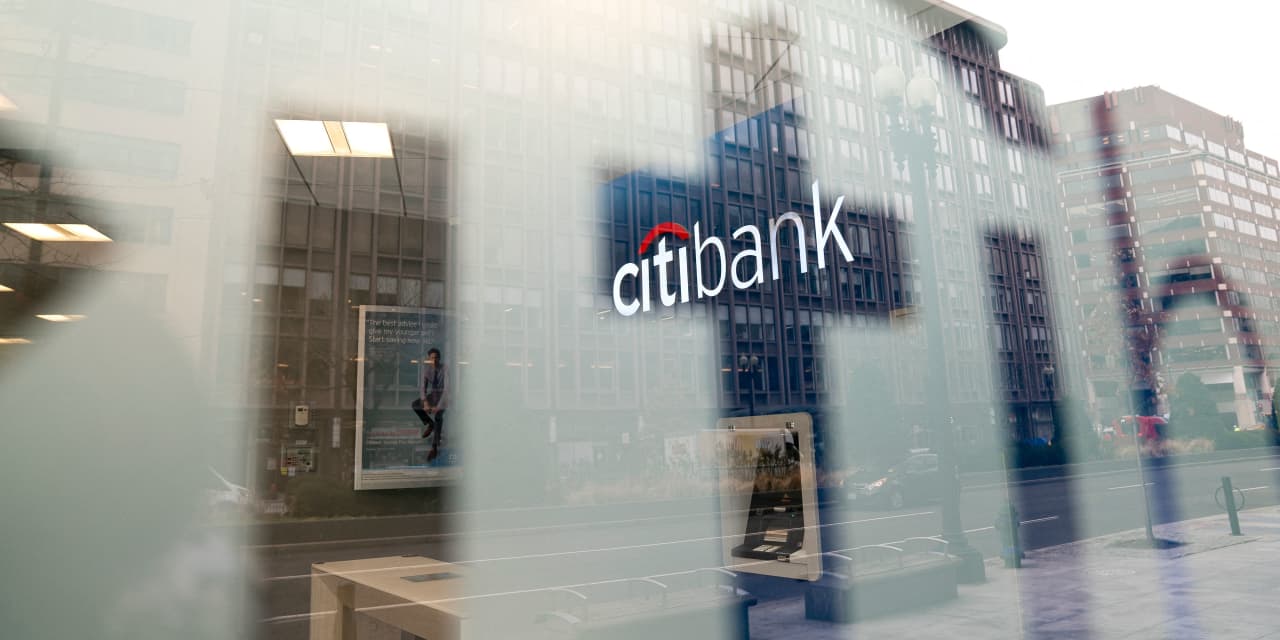Citigroup has a steep hill to climb—something it knows all too well.
Expenses are too high, the staff is bloated, profit margins are too low, and the stock has flatlined, especially compared to
Citi
‘s main three competitors, numbers compiled by Barron’s show.
CEO Jane Fraser has her work cut out for her, and she’s chipping away at turning around the big bank.
Right now, one of her bigger projects is simplifying Citi’s organization structure by stripping out management layers—and consequently streamlining decision-making.
When all is said and done, up to 10% of Citi’s 240,000 employees could get pink slips, CNBC reported Monday, citing people familiar with the matter. The bank didn’t confirm any layoffs. The bank told Barron’s that it would provide more information in January when it delivers its quarterly earnings report.
When Fraser laid out her restructuring plans in September, she made no bones about the fallout.
“We have taken hard, consequential, tough decisions here. They aren’t going to be universally popular within our bank. It’s going to make some of our people very uncomfortable,” said Fraser, at a conference where she discussed flattening the org chart. “I am absolutely fine with that.”
Fraser has been in overhaul mode almost from the day she took over the top job at America’s third largest bank in March 2021.
The bank’s first female chief executive has wound down Citi’s retail banking operations in more than a dozen markets across Europe, Middle East, Africa, and Asia. In October, the bank sold its consumer wealth portfolio in China—$3.6 billion in assets under management and bank deposits—to
HSBC,
Europe’s largest bank by total assets, which stood at nearly $3 trillion at the end of last year.
In the U.S., the four biggest banks, by total assets:
JPMorgan,
$3.9 trillion;
Bank of America,
$3.2 trillion; Citi, $2.4 trillion; and
Wells Fargo,
$1.9 trillion.
By net income, though, Citi brings up the rear—-$13.4 billion over the past four quarters. The sum was a quarter of JPMorgan’s and less than half of Bank of America’s. Even smaller Wells Fargo brought in more money.
The reason for the poor showing: Citi is particularly inefficient at controlling its noninterest operating expenses.
Over the past four quarters, Citi’s overhead expenses made up 68% of its total revenue, substantially higher than Wells Fargo and JPMorgan—and above Bank of America’s 64%, according to FactSet.
Return on equity, which indicates how effective a company is in converting its investments into net income, was 6.2% at Citi, again significantly lower than its three rivals.
At its 2022 inventory day, Citi laid out its targets to boost its return on tangible equity to at least 11% in the next few years and cut the efficiency ratio to below 60%. But the financial impact of its reorganizations won’t be reflected in results until this year’s fourth quarter, which ends on Dec. 31, the bank has said.
With 240,000 employees around the globe, Citi is second only in workforce size to JPMorgan. Jamie Dimon’s operation has 29% more employees, but also 65% more assets and 53% more revenue.
Citi made $56,000 in profit per employee over the past four quarters, compared with JPMorgan’s $165,000, Bank of America’s $143,200, and Wells Fargo’s $81,600.
Fraser has made clear she is up for cutting redundancies.
So far, Wall Street is upbeat about a trimmed-down Citi. In September, Wells Fargo analyst Mike Mayo wrote that the reorganization should “help reduce the fiefdoms that have plagued the firm in lieu of greater coordination.” He expects the stock to reach $55 in the next 12 months, about 31% up from its current level. The average per-share price target of analysts polled by FactSet is $50.
Investors, on the other hand, have been more cautious. Citigroup’s struggles started more than two decades ago, but took a turn for the worse during the subprime mortgage crisis of 2007 and 2008, when the bank had to write off billions of dollars in bad loans and accept a government bailout to stay afloat. The stock fell sharply as many banks did, but Citi shares never bounced back.
Missed financial targets and regulatory scrutiny for weak risk management under Fraser’s predecessor, former CEO Michael Corbat, didn’t help. Under Fraser, the stock is down another 40%. Today, it trades more than 90% below pre-2007 levels.
The depressed price could be a good entry point: Citi shares are trading at just 49% of the bank’s tangible book value, less than one third the valuation of JPMorgan and half the average of its peer group.
Warren Buffett’s Berkshire Hathaway,
for one, bought $2.5 billion worth of Citi shares last year, making it one of the top holdings for the famous value investor.
Corrections & Amplifications
Citi sold its consumer wealth portfolio in China to HSBC. An earlier version of this article incorrectly said Citi sold its consumer business in China to HSBC.
Write to Evie Liu at [email protected]
Read the full article here













